Yes I know it looks tatty !
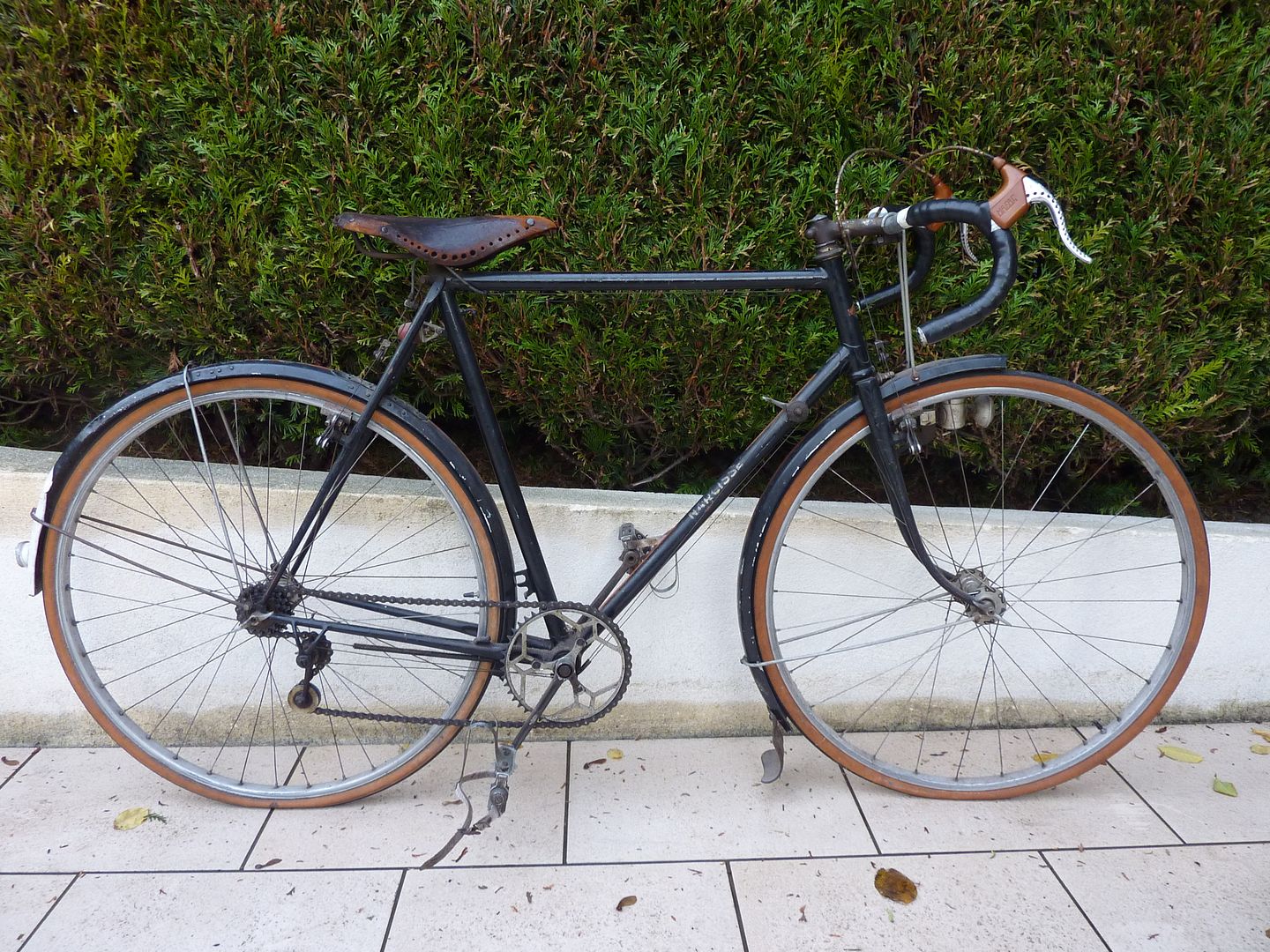
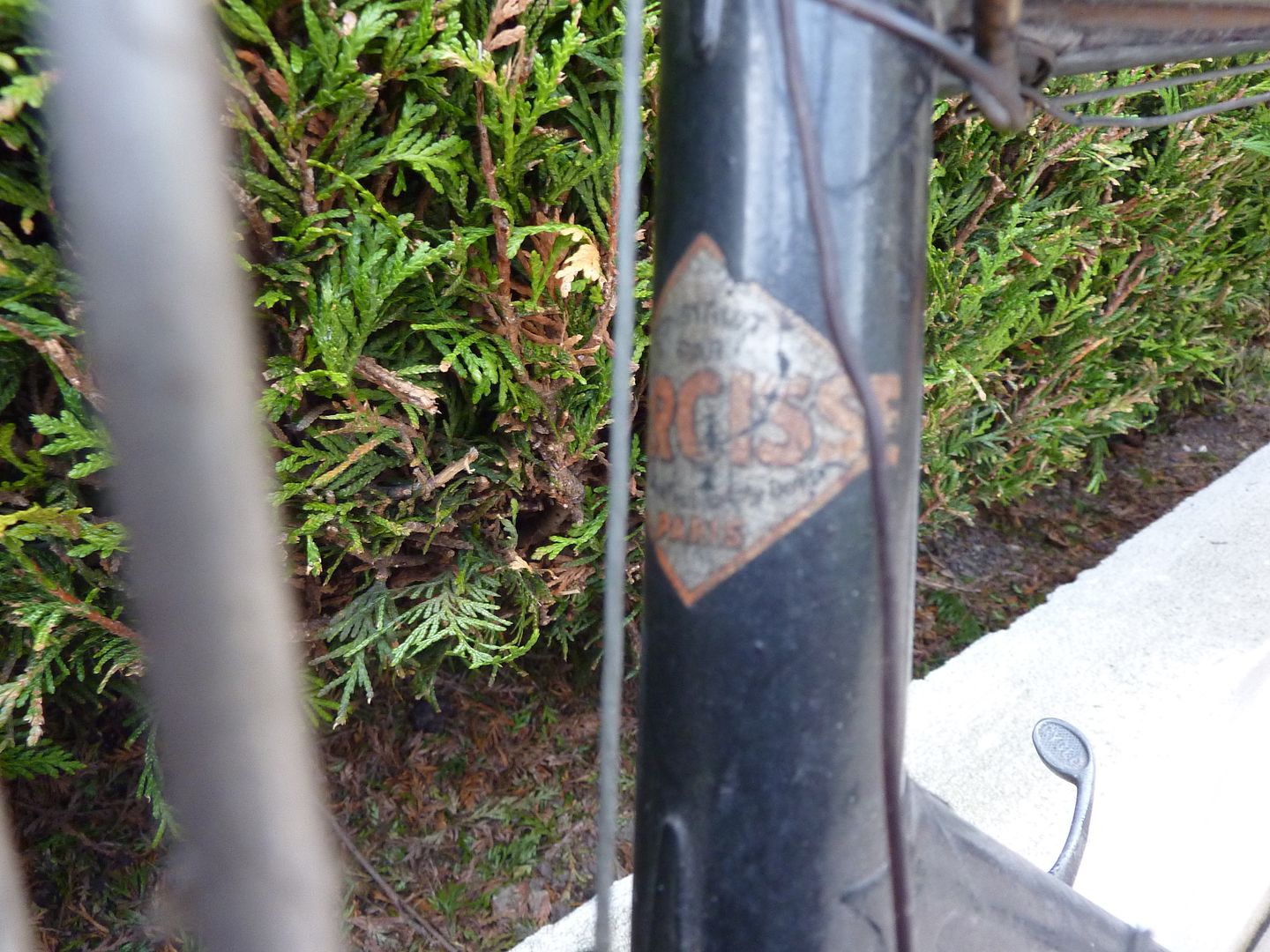
But under the grime is a quite interesting bicycle : a Narcisse
Narcisse is a French builder who was active before and after the second world war in Paris. ( father initially and later his son).
Very few of his bikes seem to have survived and the production must have been very limited in numbers. But he made a name because he belonged to that small circle of French builders which existed mostly just before WWII and into the 50’s and who did produce high end machines, most of the time custom made on order, and thanks to new materials and techniques improved substantially over the beginning of the century “bricks”.
I would say that duralumin is one of the main cause for progress in these pre war bikes, as it allowed a substantial weight decrease and combined with high end tubing allowed bikes to go below the 10kg mark. Other developments include annular bearings, cotterless cranks, etc…
This progress was possibly the combination of a “industry” push as marketing for duralumin was promoted and an increase in use of bikes as longer vacation, more leisure and tourism development created a user “pull”.
The technical trials in France started in 1934 and lasted until end of 40’s were a showcase of such machines.
https://janheine.wordpress.com/2011/12/ ... al-trials/
Narcisse won two of these.
A few years after the start of these “trials”, there had to be a split between the “prototypes” and the “serie” bicycles as builders embarked on a “rat race” filing and minimizing the weight of every part.
Narcisse is said to have won the 1938 trial with a 7.940 kg bikes with tyres on !
Frame of this bike is 3.160kg with bottom bracket and Headset so possibly 2.6/2.7 kg for frame /fork
Not bad for a 1938 bike
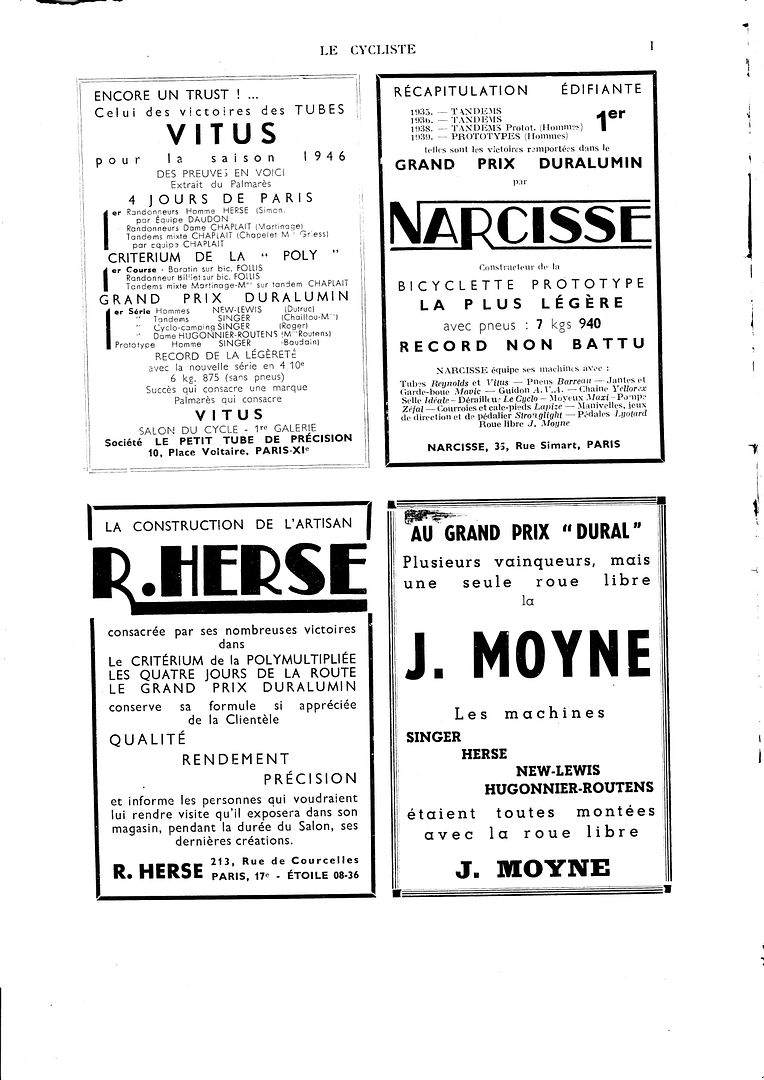
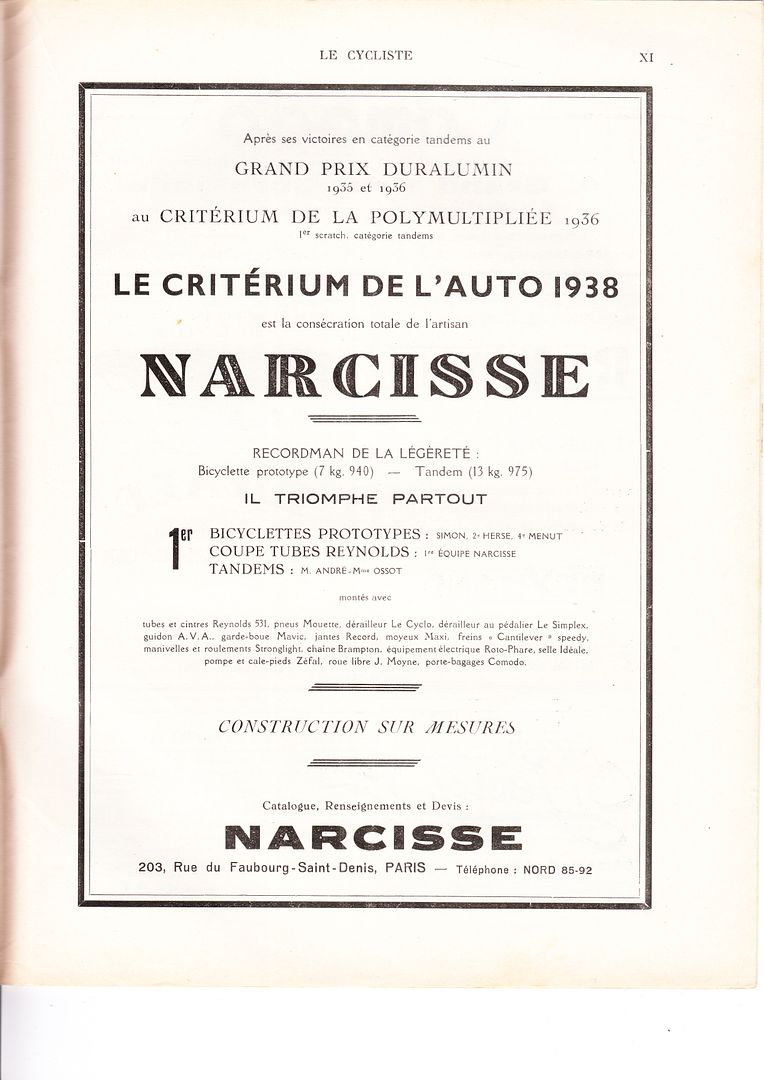
This bicycle is interesting on several counts as it sports some of the latest improvements at that time
Namely :
needle bearings bottom bracket ( still to be undone and cleaned)
annular bearings hubs ( Maxi Car and CAR) with duralumin rims (28holes in the front and 36h rear)
aheadset stem
cotterless stronglight crankset
speedy cantilever brakes ( one of the early example of cantilevers )
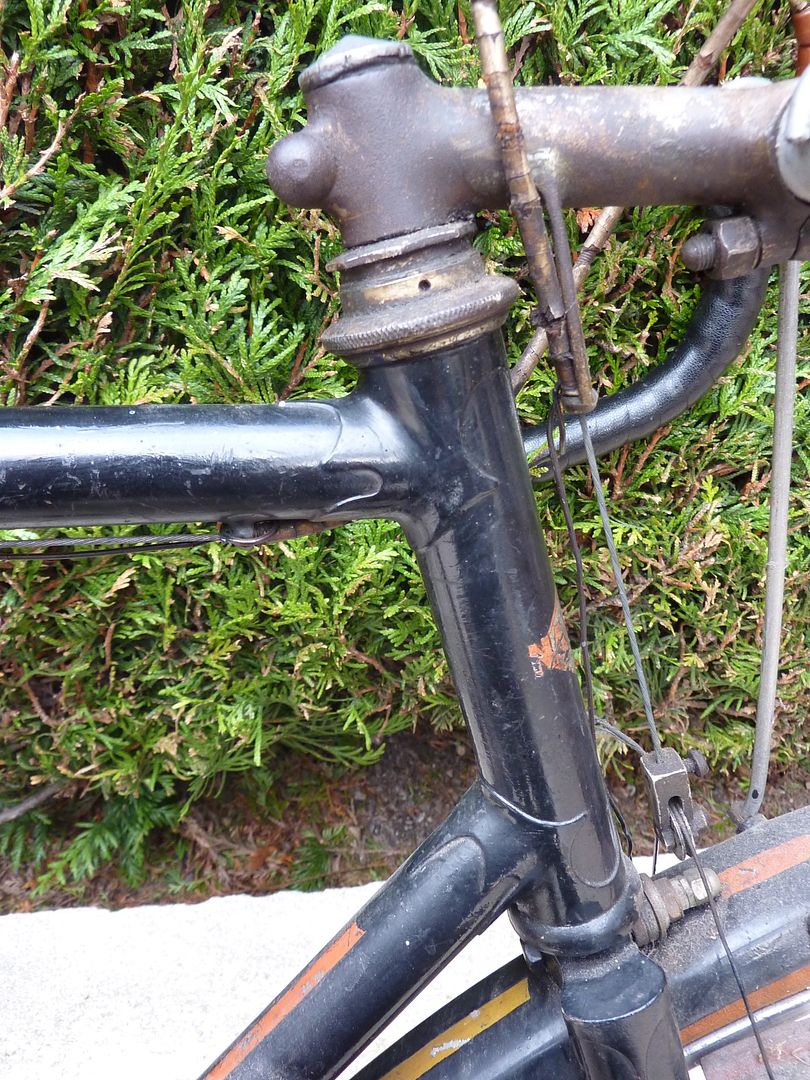
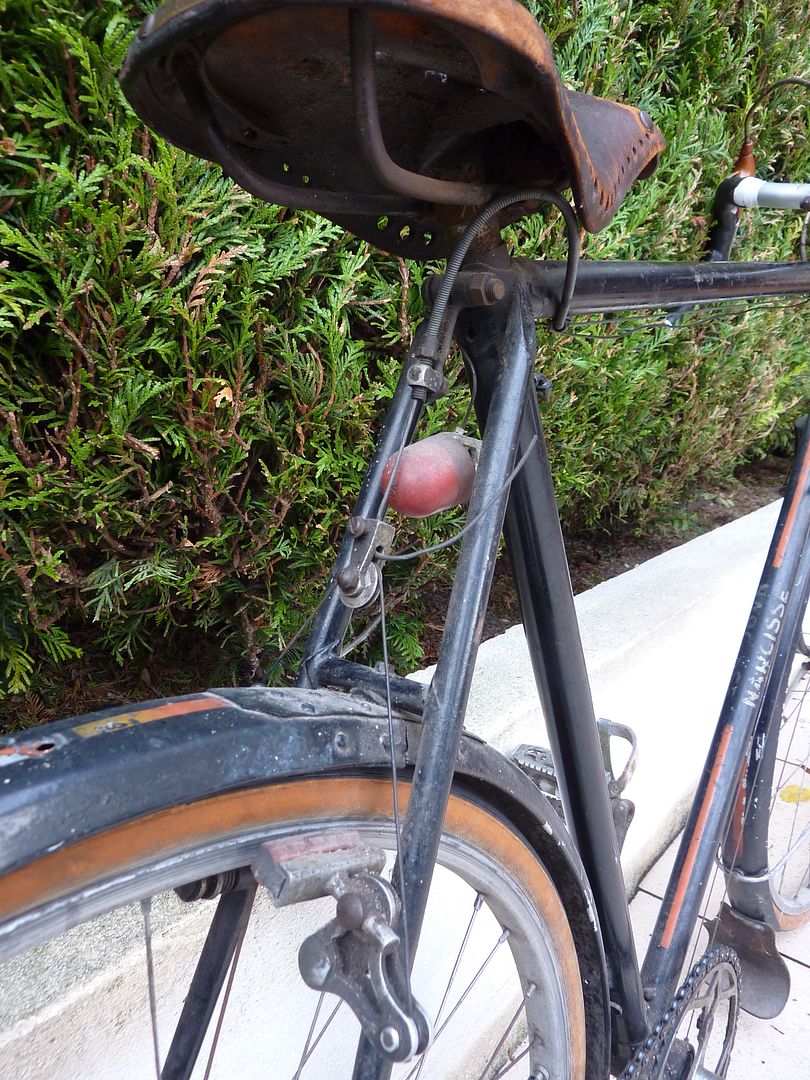
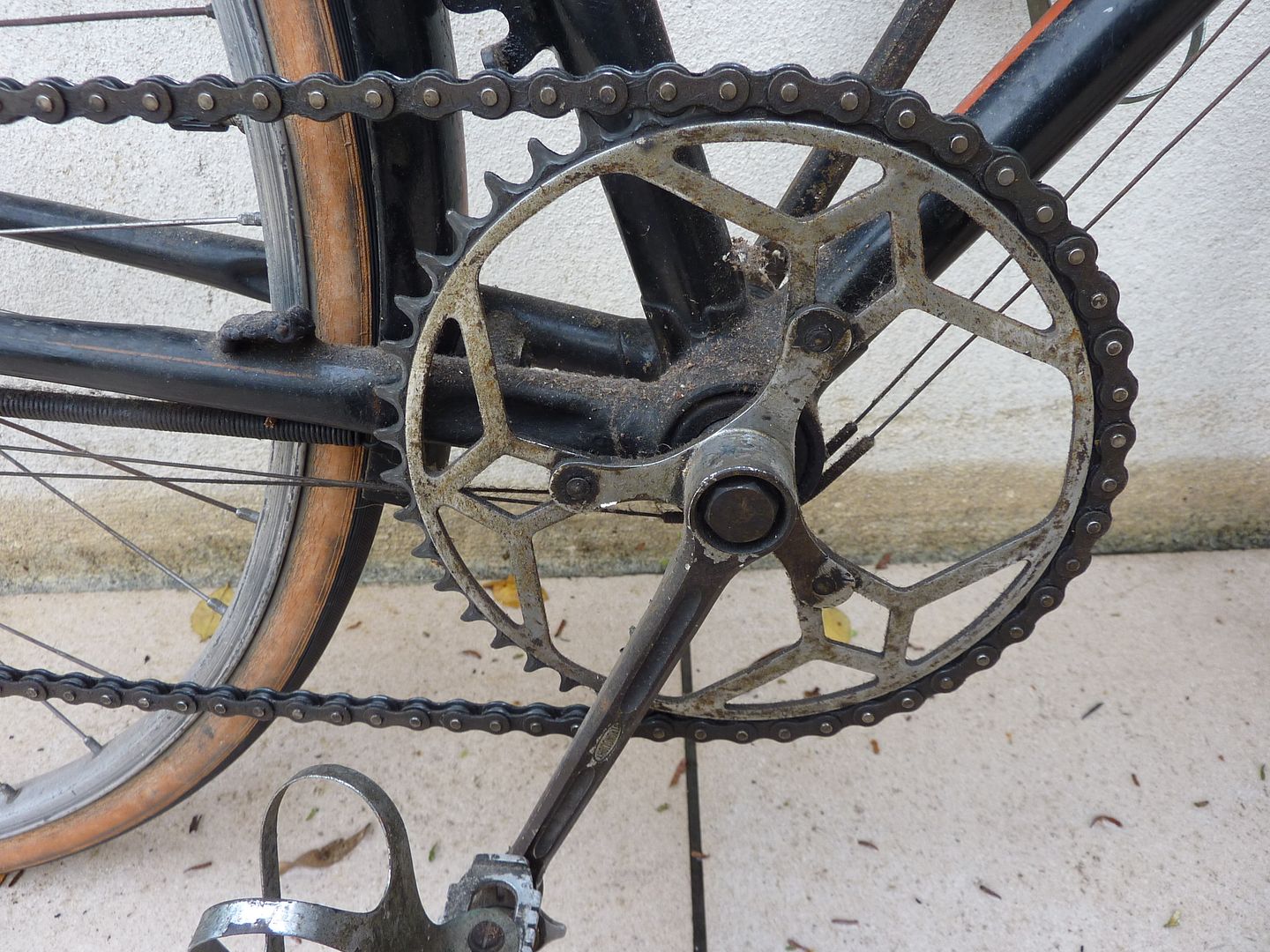

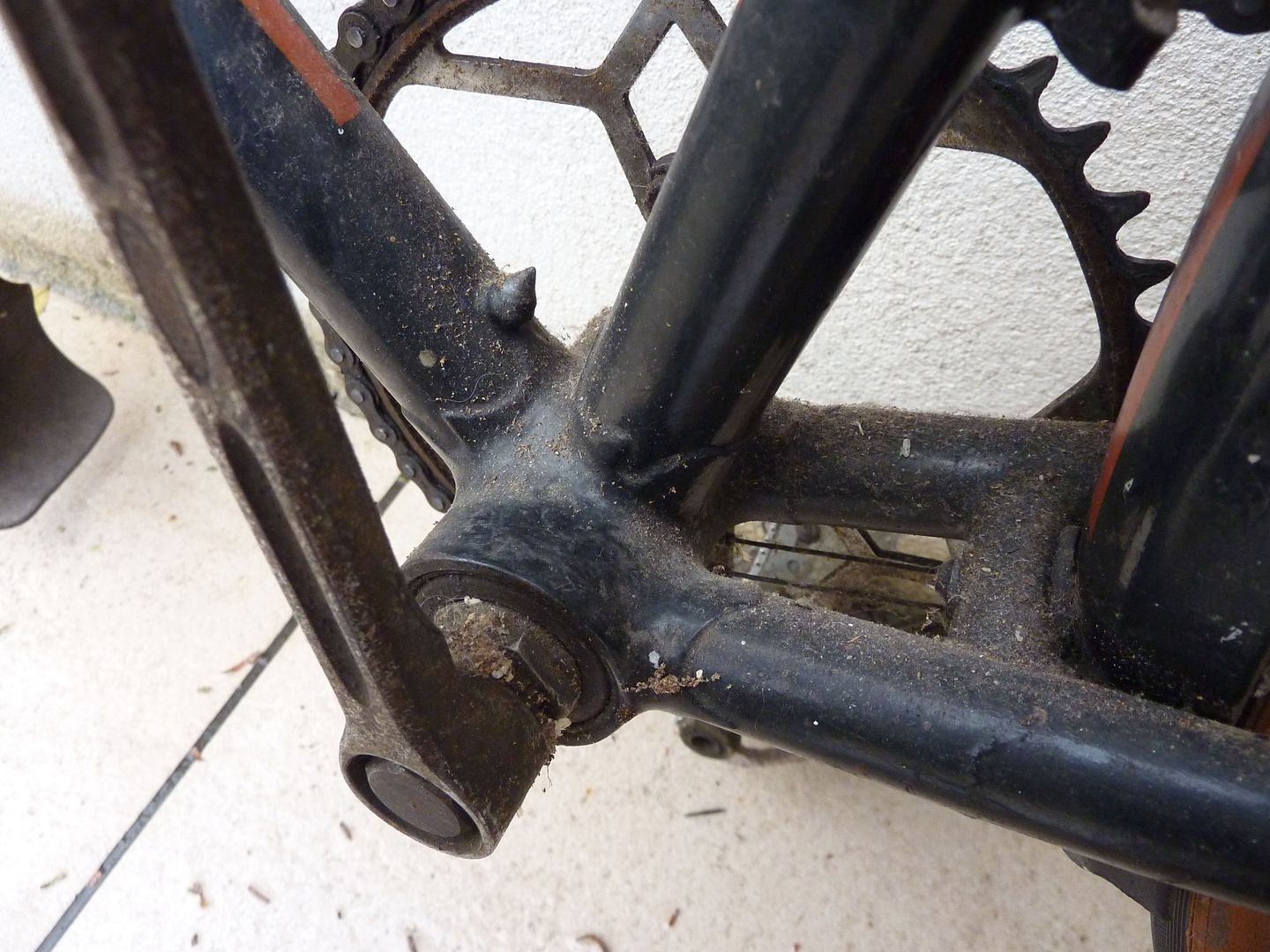
I have started to rejuvenate this bicycle. I have to find period parts - such as the brake levers - and will change the fenders which are beyond hope ( I actually tried to have these Macic fenders mended but to no avail ),
Will have to relace the rear wheel as too many spokes are damaged or rusted.
One thing I probably won’t be able to do is find the missing front derailleur. At that time, it was common for these to be custom made by the builder but no pics is available to help me in that regard.
Now lets look at the specifics
The wheels
CAR was actually a French make , from the Ripet company in Saint Etienne - builder of hubs and cranksets and one of the first builder of annular bearings hubs.
It sold possibly end of 1938 to the MAXI company, who did make usual cones and balls hubs. and became the pretty weel known Maxi-Car make.
The pair of hubs is unusual as it sports not the usual screwed side covers seen on later post war maxi car hubs. There is just an open ring to block it. These hubs are just amazing; I have done nothing to them and they are still buttery.
The rims are most probably MAVIC Dura rims mounted on all the prewar high end machines. The front rim is very unusual at 28 spokes. The wheel weighs 770g ! quite an achievement at that time.
The spokes are as startling and awesome. These are 3 stars Robergel stainless steel butted spokes of 1.8/1.5 mm. They are so flexible and durable I am still amazed. I had just to clean these with triple 000 wool.
Some of these had been changed to cheaper ones which rusted, so I had to kidnap some rear wheel ones to rebuild the front wheel and unfortunately will have to relace the rear with new DT ones ( robergel are unfortunately as rare as a hen’s teeth !) and alas , the DT revolution 2/1.5 don’t come in the 302mm length so I have to settle on DT Competition.
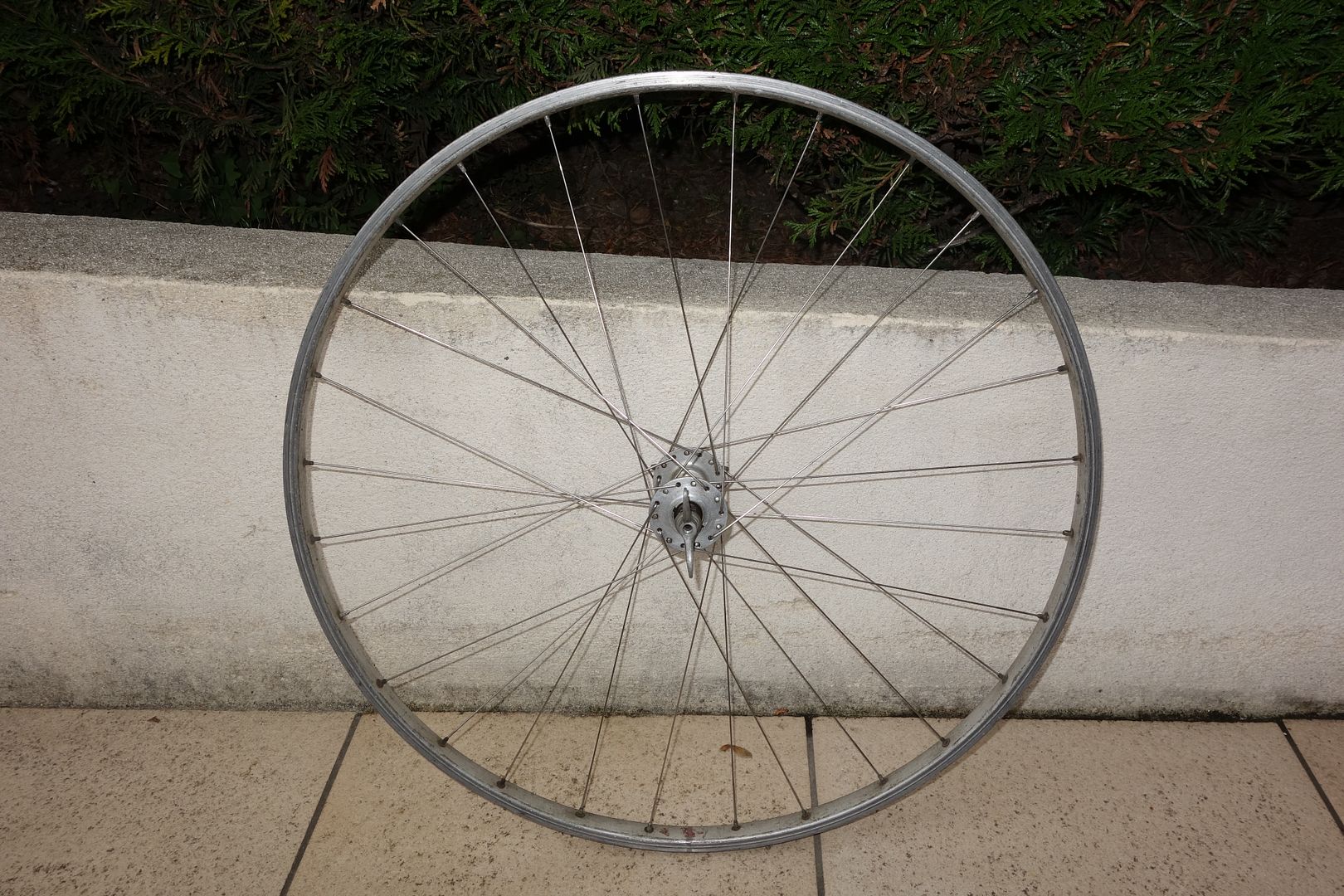
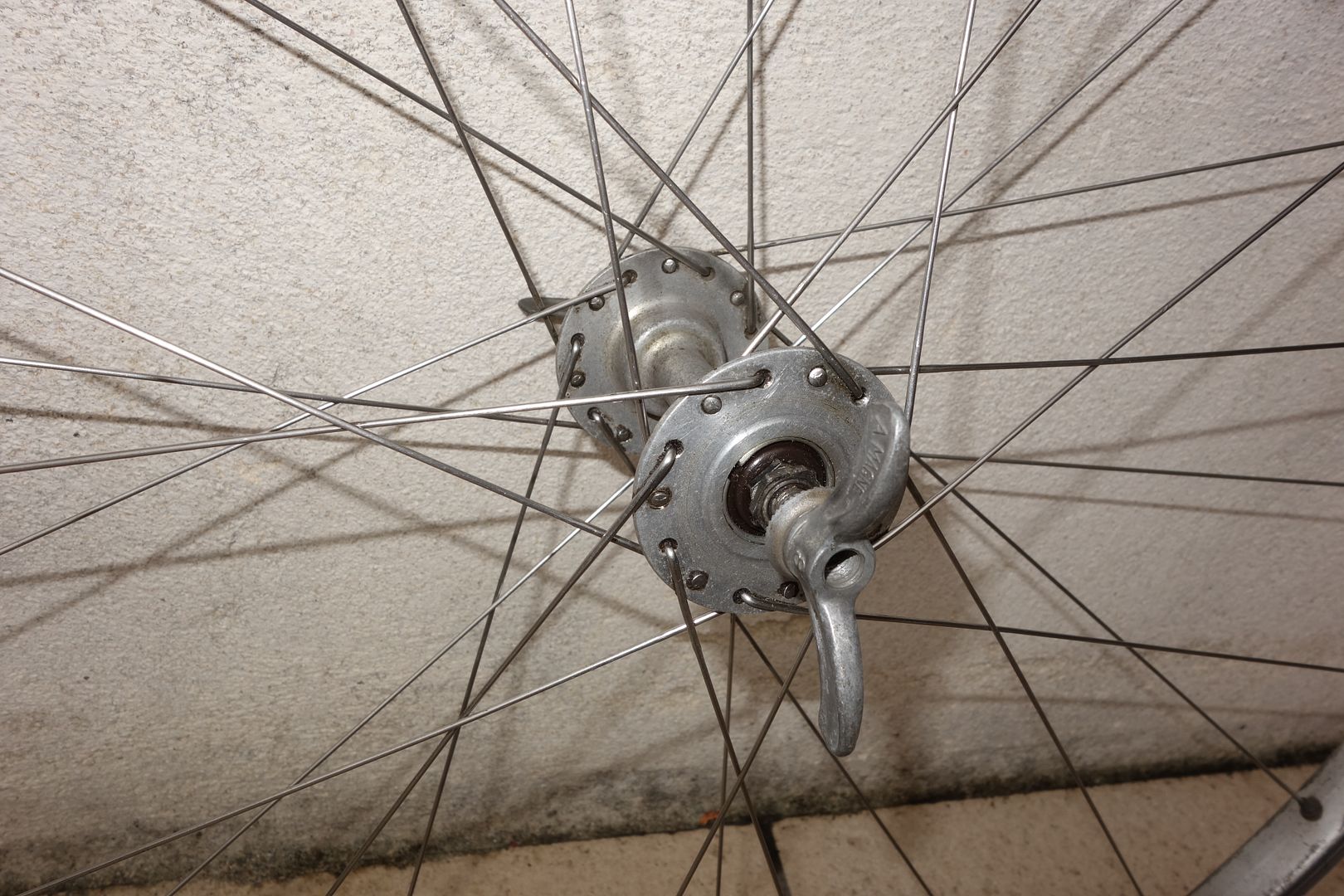
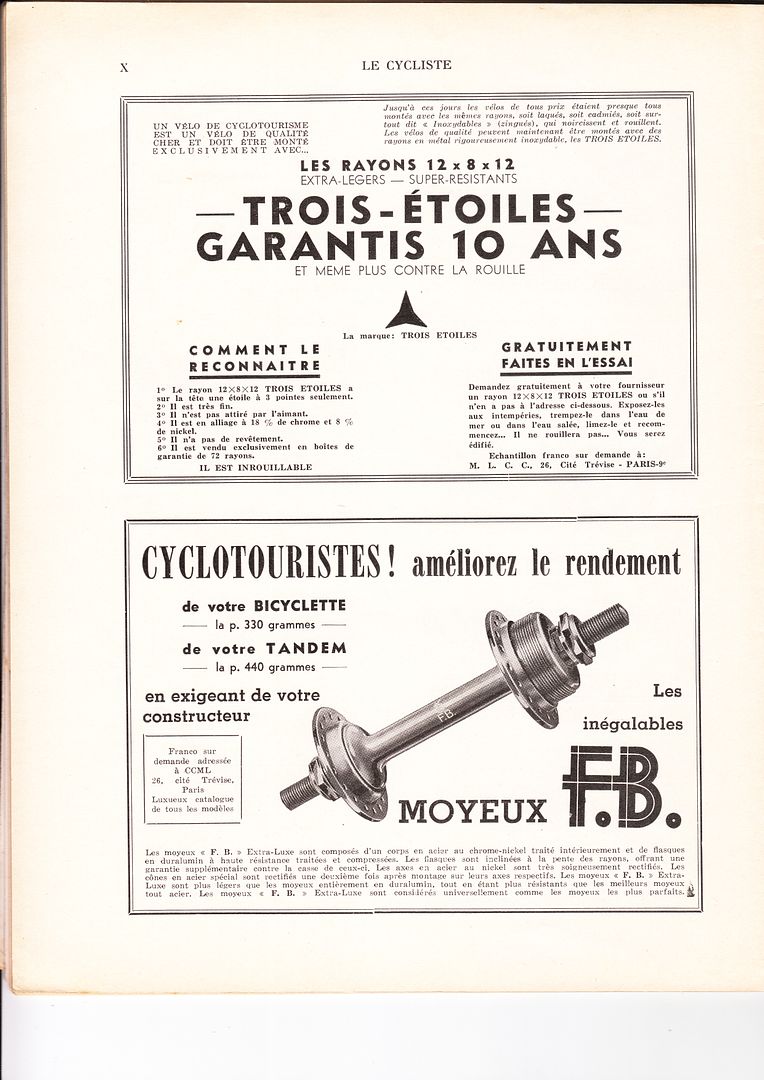
Crankset : it is a stronglight which apparently was presented at the “salon du cycle” in 1937
Courtesy of "Velocifer"
https://www.flickr.com/photos/velocifer/
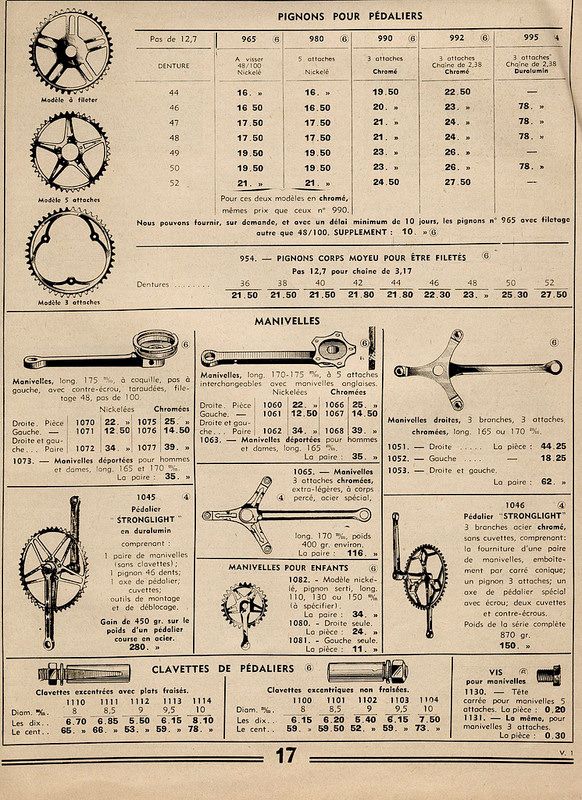
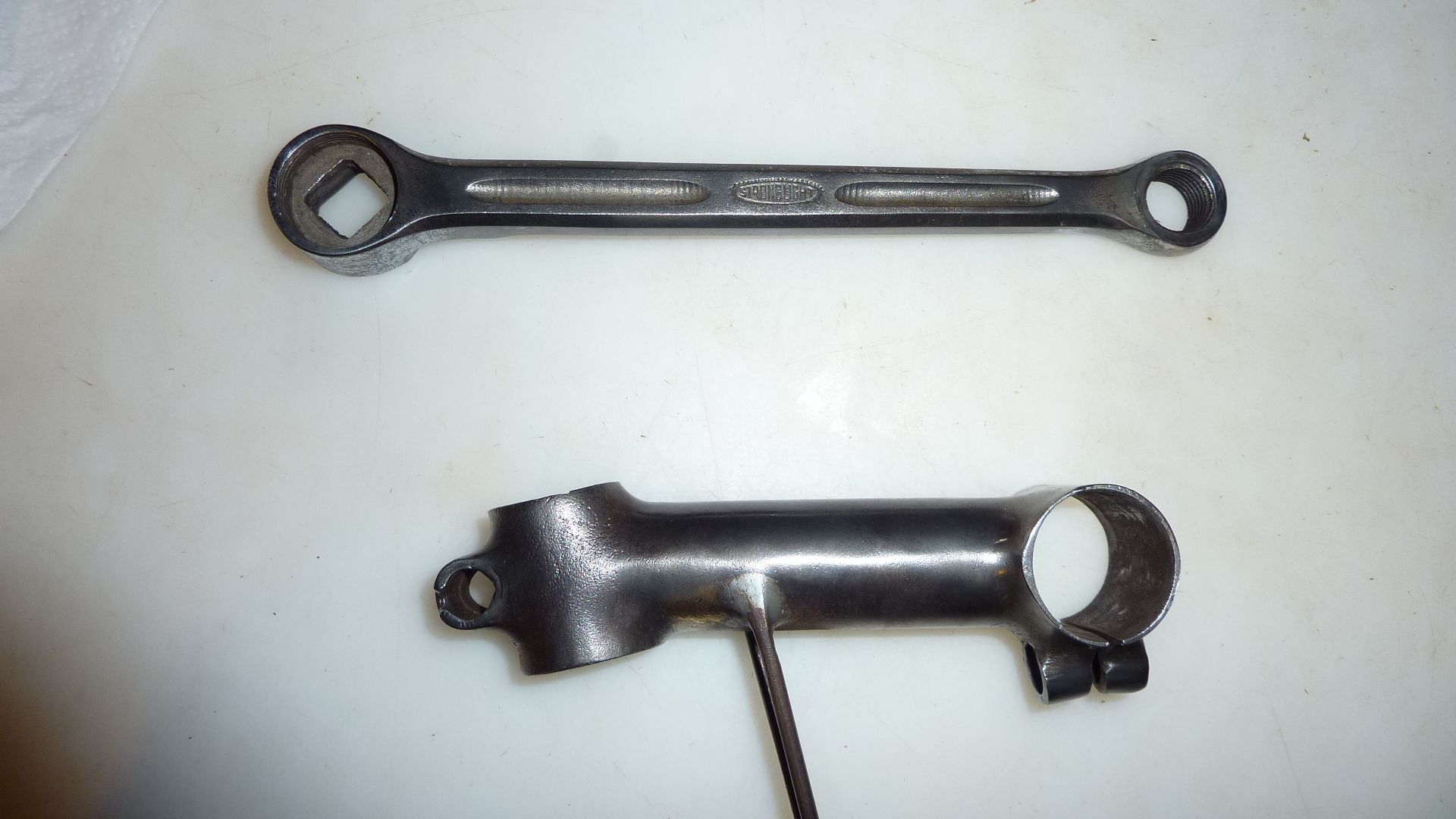
Stem is quite unusual and possibly one of the first ahead stem. You see similar stems on French bicycle of the era or later
Il weighs165 g
Here a 1948 Rebour page of sketches
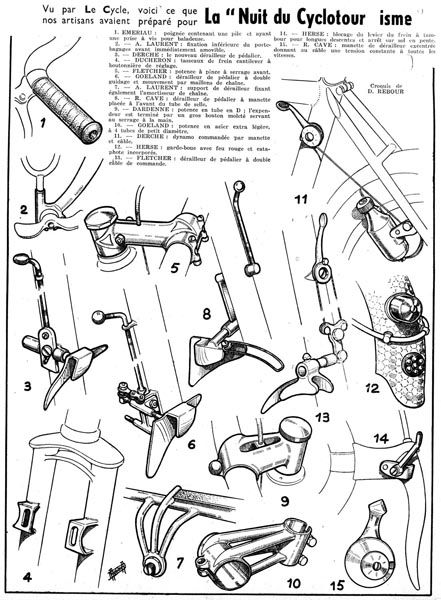
Brakes are Speedy
Apparently these speedy brakes are an evolution of the first cantilever brakes attributed to the French builder Barra. Supposedly In 1936.
They evolved later on to the specific Herse cantilevers. By the way Herse apparently did a stint at Narcisse learning the tools of the trade before starting his own venture in 1939/1940.
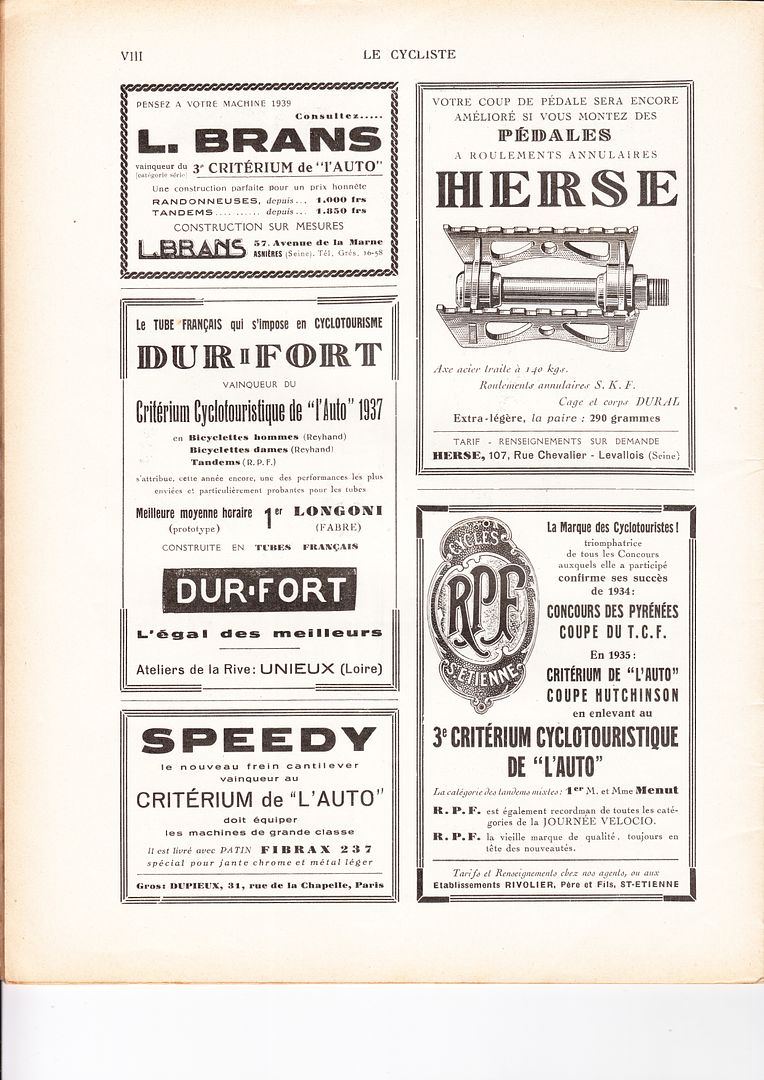
Now need to do more cleaning !
.


But under the grime is a quite interesting bicycle : a Narcisse
Narcisse is a French builder who was active before and after the second world war in Paris. ( father initially and later his son).
Very few of his bikes seem to have survived and the production must have been very limited in numbers. But he made a name because he belonged to that small circle of French builders which existed mostly just before WWII and into the 50’s and who did produce high end machines, most of the time custom made on order, and thanks to new materials and techniques improved substantially over the beginning of the century “bricks”.
I would say that duralumin is one of the main cause for progress in these pre war bikes, as it allowed a substantial weight decrease and combined with high end tubing allowed bikes to go below the 10kg mark. Other developments include annular bearings, cotterless cranks, etc…
This progress was possibly the combination of a “industry” push as marketing for duralumin was promoted and an increase in use of bikes as longer vacation, more leisure and tourism development created a user “pull”.
The technical trials in France started in 1934 and lasted until end of 40’s were a showcase of such machines.
https://janheine.wordpress.com/2011/12/ ... al-trials/
Narcisse won two of these.
A few years after the start of these “trials”, there had to be a split between the “prototypes” and the “serie” bicycles as builders embarked on a “rat race” filing and minimizing the weight of every part.
Narcisse is said to have won the 1938 trial with a 7.940 kg bikes with tyres on !
Frame of this bike is 3.160kg with bottom bracket and Headset so possibly 2.6/2.7 kg for frame /fork
Not bad for a 1938 bike


This bicycle is interesting on several counts as it sports some of the latest improvements at that time
Namely :
needle bearings bottom bracket ( still to be undone and cleaned)
annular bearings hubs ( Maxi Car and CAR) with duralumin rims (28holes in the front and 36h rear)
aheadset stem
cotterless stronglight crankset
speedy cantilever brakes ( one of the early example of cantilevers )





I have started to rejuvenate this bicycle. I have to find period parts - such as the brake levers - and will change the fenders which are beyond hope ( I actually tried to have these Macic fenders mended but to no avail ),
Will have to relace the rear wheel as too many spokes are damaged or rusted.
One thing I probably won’t be able to do is find the missing front derailleur. At that time, it was common for these to be custom made by the builder but no pics is available to help me in that regard.
Now lets look at the specifics
The wheels
CAR was actually a French make , from the Ripet company in Saint Etienne - builder of hubs and cranksets and one of the first builder of annular bearings hubs.
It sold possibly end of 1938 to the MAXI company, who did make usual cones and balls hubs. and became the pretty weel known Maxi-Car make.
The pair of hubs is unusual as it sports not the usual screwed side covers seen on later post war maxi car hubs. There is just an open ring to block it. These hubs are just amazing; I have done nothing to them and they are still buttery.
The rims are most probably MAVIC Dura rims mounted on all the prewar high end machines. The front rim is very unusual at 28 spokes. The wheel weighs 770g ! quite an achievement at that time.
The spokes are as startling and awesome. These are 3 stars Robergel stainless steel butted spokes of 1.8/1.5 mm. They are so flexible and durable I am still amazed. I had just to clean these with triple 000 wool.
Some of these had been changed to cheaper ones which rusted, so I had to kidnap some rear wheel ones to rebuild the front wheel and unfortunately will have to relace the rear with new DT ones ( robergel are unfortunately as rare as a hen’s teeth !) and alas , the DT revolution 2/1.5 don’t come in the 302mm length so I have to settle on DT Competition.



Crankset : it is a stronglight which apparently was presented at the “salon du cycle” in 1937
Courtesy of "Velocifer"
https://www.flickr.com/photos/velocifer/


Stem is quite unusual and possibly one of the first ahead stem. You see similar stems on French bicycle of the era or later
Il weighs165 g
Here a 1948 Rebour page of sketches

Brakes are Speedy
Apparently these speedy brakes are an evolution of the first cantilever brakes attributed to the French builder Barra. Supposedly In 1936.
They evolved later on to the specific Herse cantilevers. By the way Herse apparently did a stint at Narcisse learning the tools of the trade before starting his own venture in 1939/1940.

Now need to do more cleaning !
.